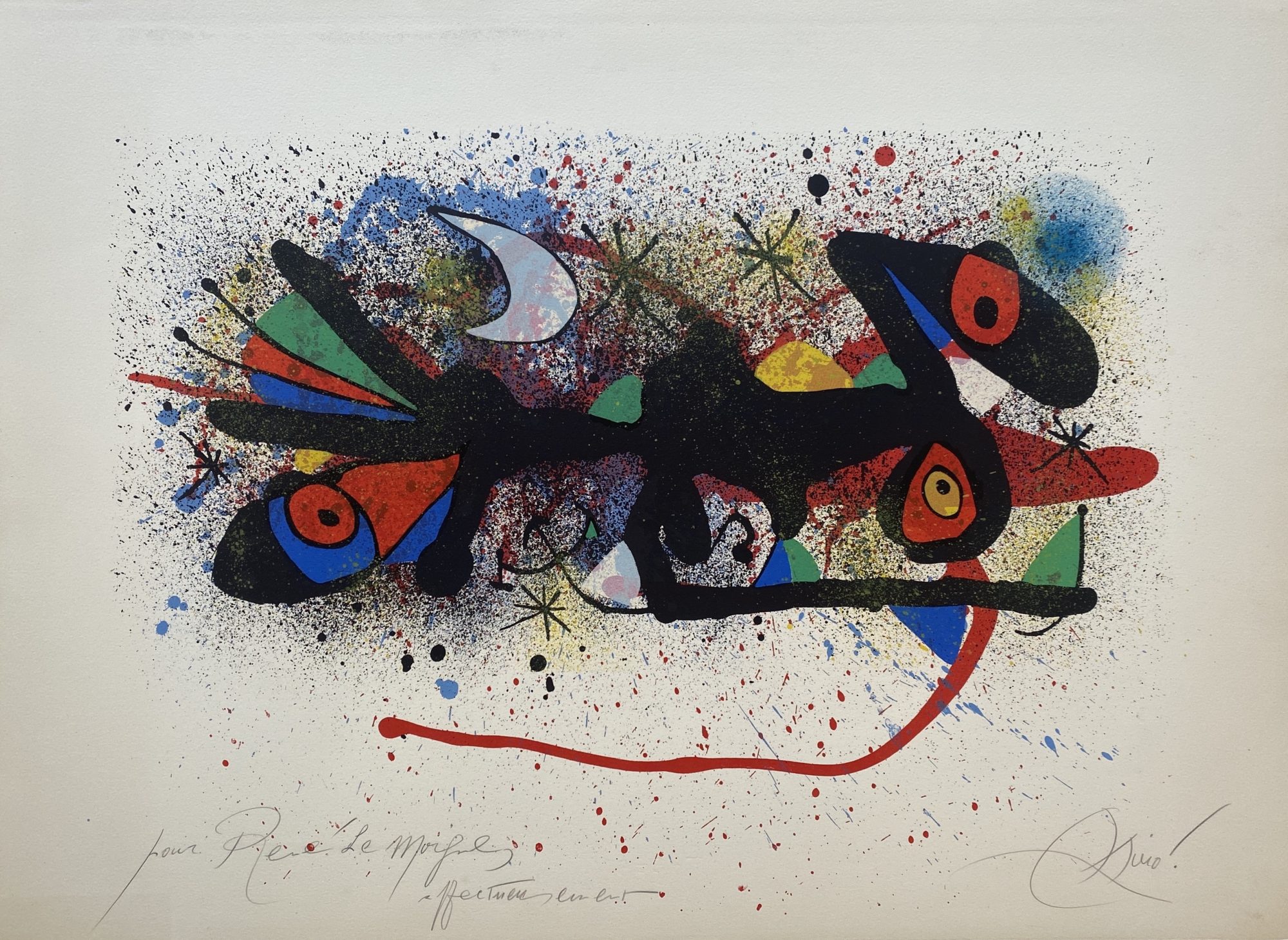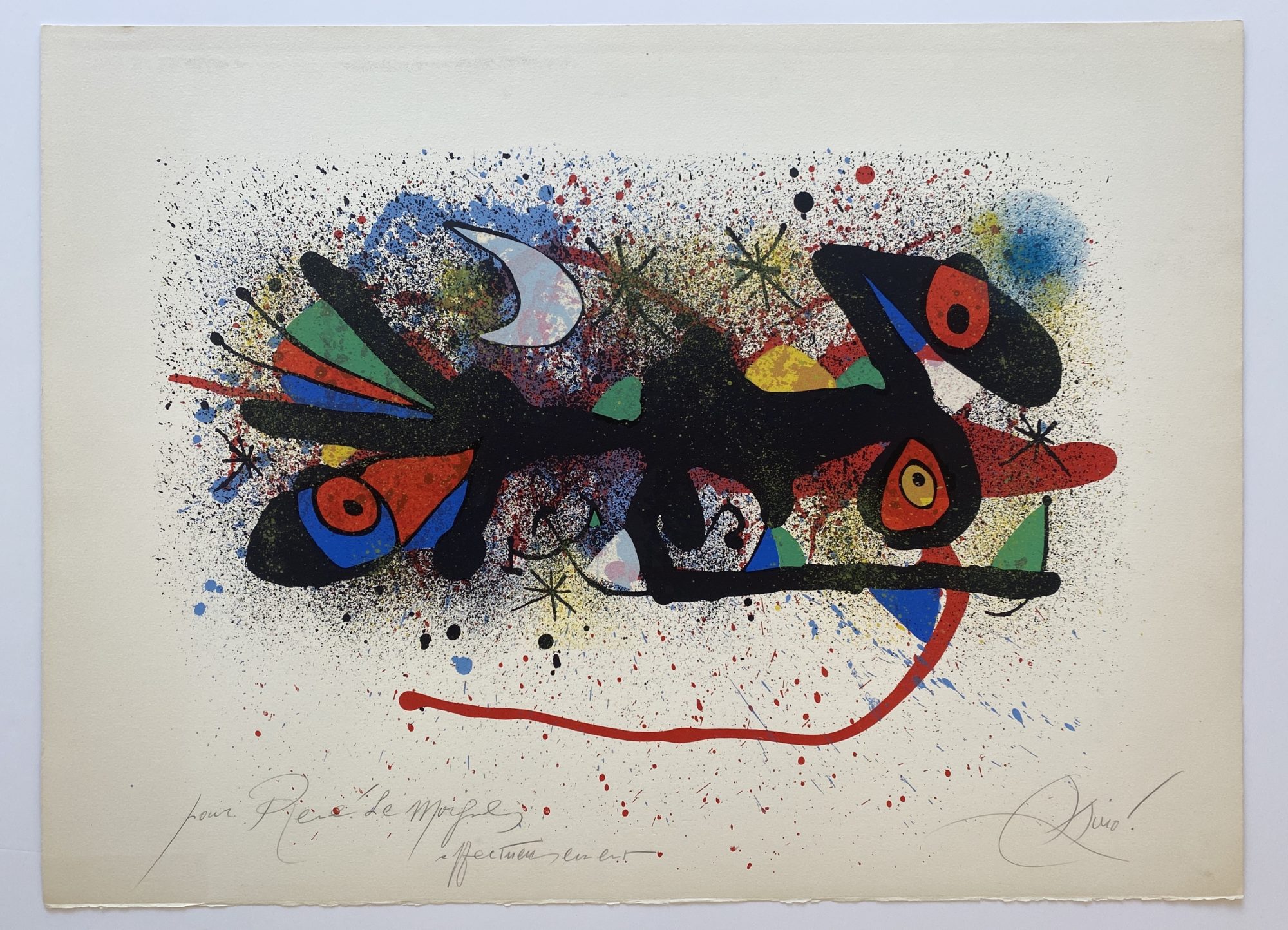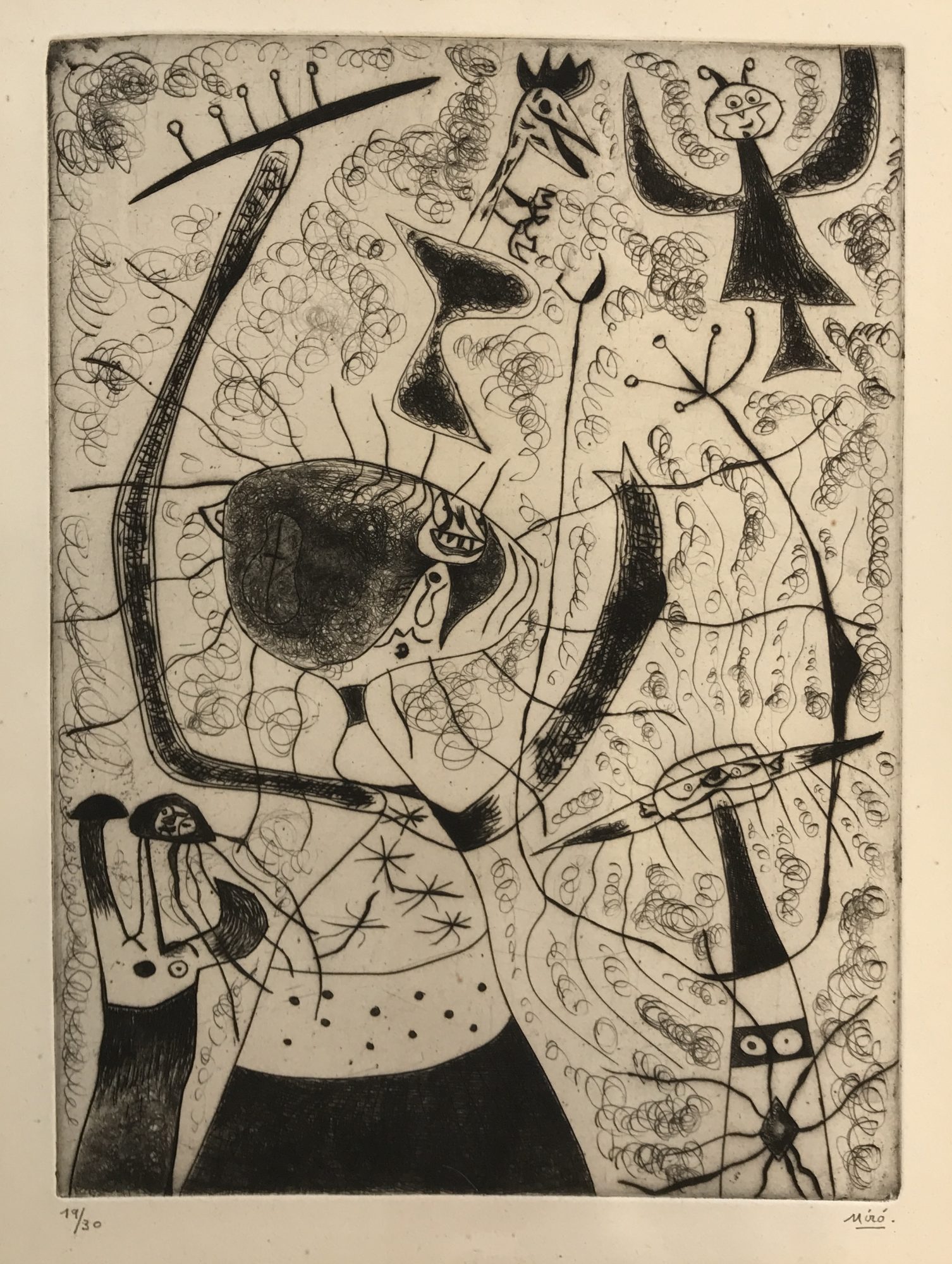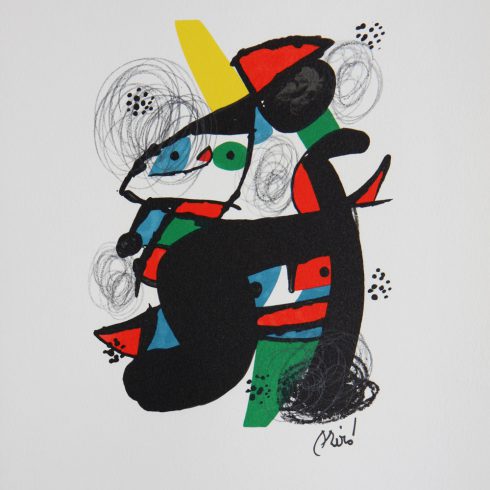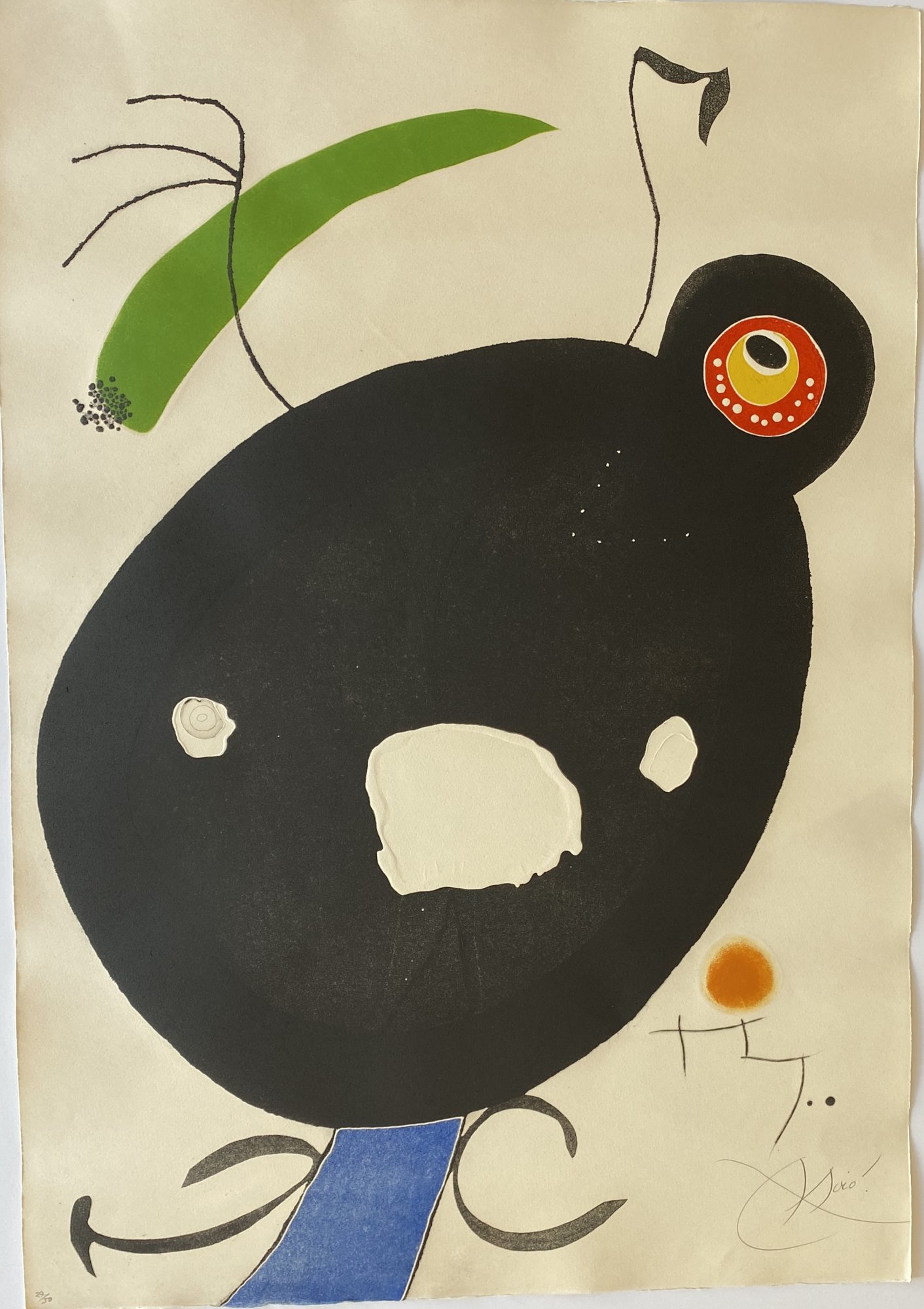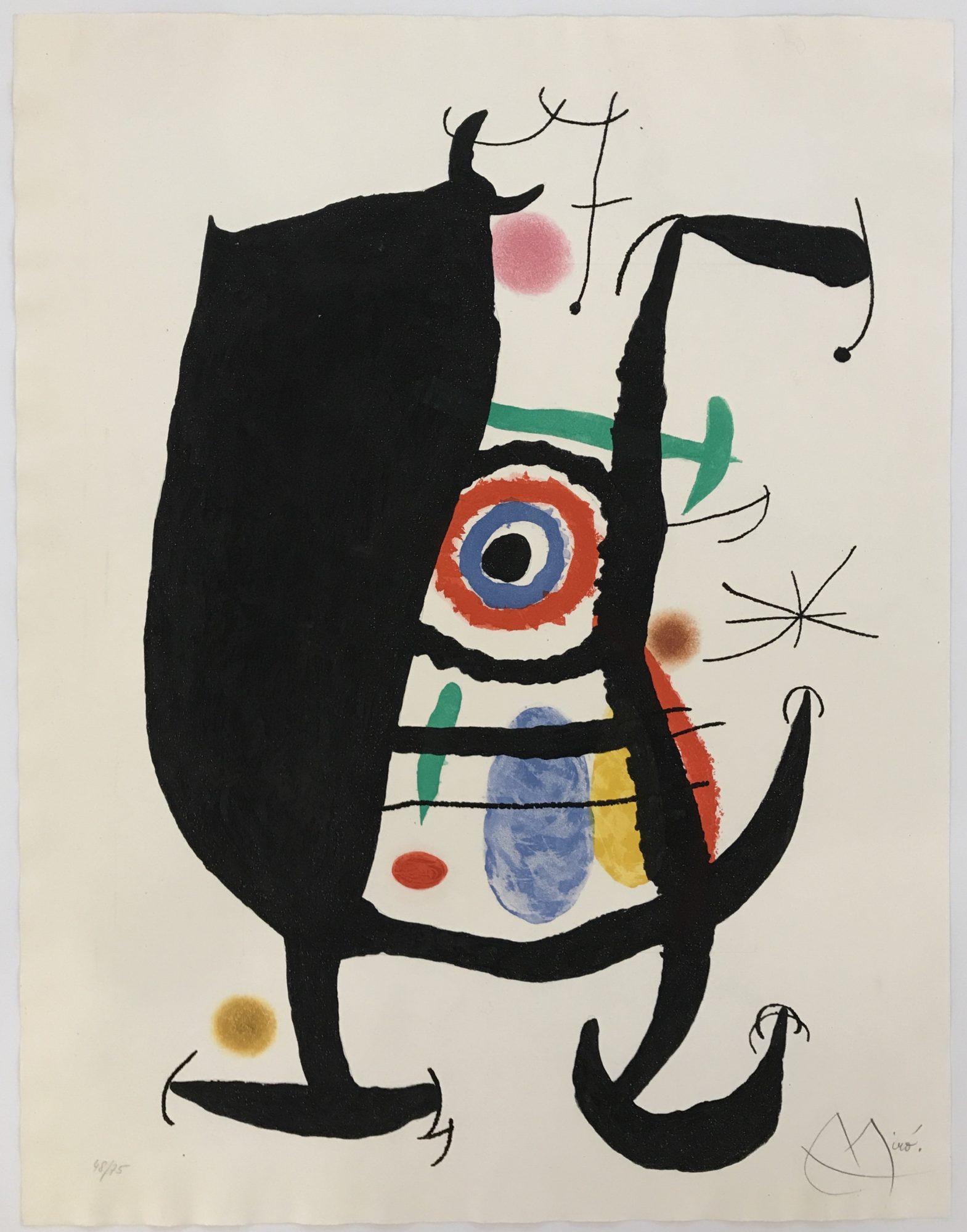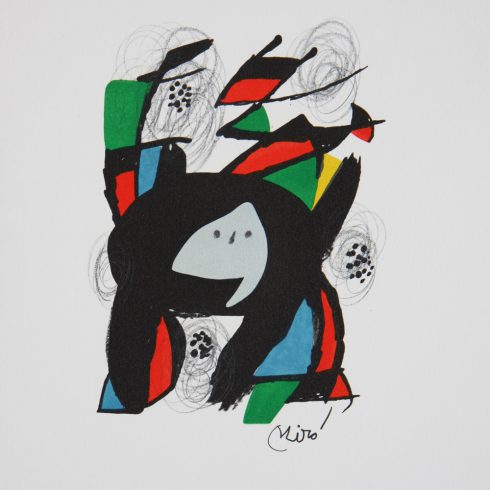Joan Miró – Ceramiques de Miro et Artigas
Joan Miró, Ceramiques de Miro et Artigas is an original Lithograph on Arches paper made in 1974. It is signed in pencil lower right and dedicated in the lower left “Pour Rene Le Moigne affectueusement.” Published by Maeght Editeur, Paris. M.927.
After visiting in 1920, Artigas moved to Paris in 1924 and opened a studio on the rue Blomet. Lacking the money to purchase a kiln, Artigas collaborated with Jean Aurenche and the brothers Jacques and Pierre Prévert on advertising films. In 1936 the Spanish Civil War forced him back to Barcelona to teach ceramics at the Escuela Massana. Following an early friendship in Barcelona and Paris, Artigas and Joan Miró began their long productive collaboration on ceramic vases toward the end of World War II in 1944. In 1953 they renewed their partnership in Artigas’s small isolated studio approximately 20 miles outside Barcelona in the mountainous village of Gallifa. In recognition of this integrated and collective effort between potter and painter, their ceramic works were signed by both artists. Artigas’s firing techniques reproduced the slow firing process and wood-burning kilns of the ancient Greeks. According to Artigas, the fire, smoke, and earthen clay preserved the elemental integrity of the ceramics, which Miró named terres de grand feu (firestones) for their joint 1956 exhibition at the Pierre Matisse Gallery in New York.
| Title | Ceramiques de Miro et Artigas |
|---|---|
| Medium | Lithograph |
| Year | 1974 |
| Edition | Aside from the edition of 50 |
| Signature | Signed, dedicated |
| Catalogue Raisonné | M.927 |
| Size | 22 x 30 (in) 56 x 76 (cm) |
| Price | SOLD |
Description
Joan Miró, Ceramiques de Miro et Artigas is an original Lithograph on Arches paper made in 1974. It is signed in pencil lower right and dedicated in the lower left “Pour Rene Le Moigne affectueusement.” Published by Maeght Editeur, Paris. M.927.
After visiting in 1920, Artigas moved to Paris in 1924 and opened a studio on the rue Blomet. Lacking the money to purchase a kiln, Artigas collaborated with Jean Aurenche and the brothers Jacques and Pierre Prévert on advertising films. In 1936 the Spanish Civil War forced him back to Barcelona to teach ceramics at the Escuela Massana. Following an early friendship in Barcelona and Paris, Artigas and Joan Miró began their long productive collaboration on ceramic vases toward the end of World War II in 1944. In 1953 they renewed their partnership in Artigas’s small isolated studio approximately 20 miles outside Barcelona in the mountainous village of Gallifa. In recognition of this integrated and collective effort between potter and painter, their ceramic works were signed by both artists. Artigas’s firing techniques reproduced the slow firing process and wood-burning kilns of the ancient Greeks. According to Artigas, the fire, smoke, and earthen clay preserved the elemental integrity of the ceramics, which Miró named terres de grand feu (firestones) for their joint 1956 exhibition at the Pierre Matisse Gallery in New York.
Additional information
| Title | Ceramiques de Miro et Artigas |
|---|---|
| Medium | Lithograph |
| Year | 1974 |
| Edition | Aside from the edition of 50 |
| Signature | Signed, dedicated |
| Catalogue Raisonné | M.927 |
| Size | 22 x 30 (in) 56 x 76 (cm) |
| Price | SOLD |
← Joan Miró – Congres de Cultura Catalana
Joan Miró – Lithograph for the County Museum of Art, Los Angeles →


